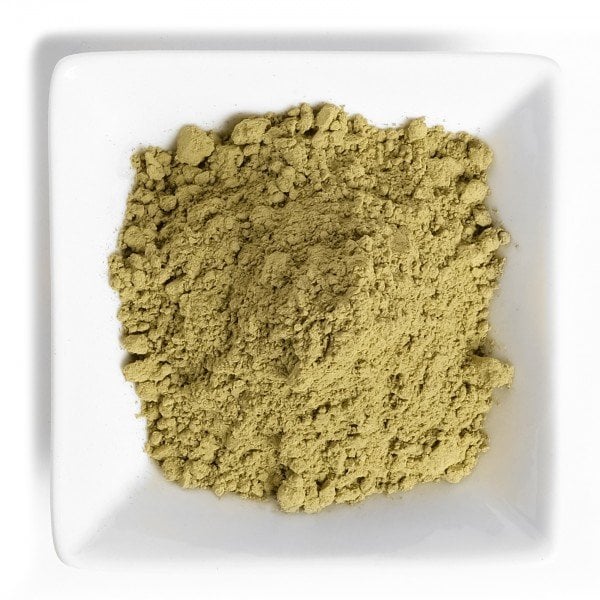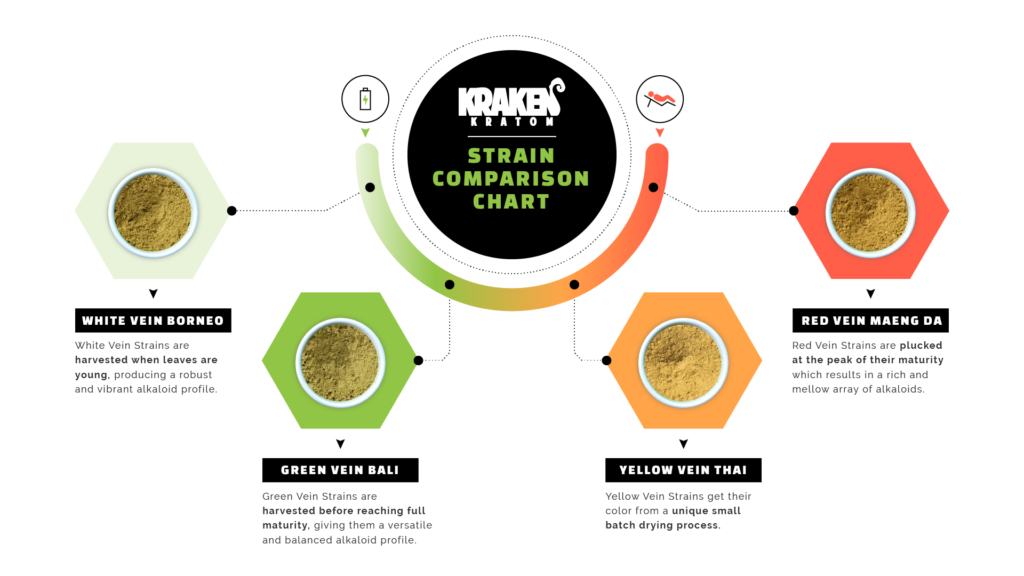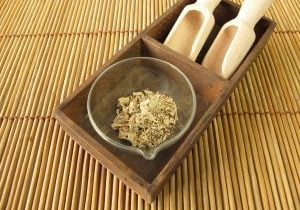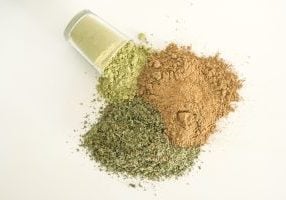What’s The Difference Between Different Kratom Strains?
Like many other plants, Kratom leaves come in a variety of colors. For example, many varieties of bell pepper can be picked when green for a bright, snappy taste, or allowed to turn yellow or red to emphasize their sweetness. Tea leaves can be harvested early to produce white tea, or later on to produce more traditional green or black tea.
The same applies to Kratom. Kratom is a specific species of tropical evergreen tree (Mitragyna speciosa) that hails from Southeast Asia. While all Kratom products are produced from this single species; the range of earthy colors available for sale has everything to do with how the leaves are harvested and dried.
In fact, the traditional way to categorize Kratom begins with the color of its leaves. White vein Kratom is harvested the earliest, green vein Kratom is harvested as the leaves mature, and red vein Kratom leaves are allowed to reach full maturity before harvest—much like red bell peppers. When it was harvested plays an important role in what alkaloids are present in Kratom.
The second element of traditional Kratom classification refers to its origin. Kratom is grown across wide stretches of Southeast Asia, and the specific conditions of different regions can produce slightly different results in the finished product. Whether you see White Vein Borneo, Red Vein Thai, or Green Vein Malaysian Kratom, you are looking at products produced from the same tree species but grown in different locations.
Geography may produce subtle variations in harvested Kratom, but color makes a big difference. Let’s take a closer look at the various vein colors of harvested Kratom, and exactly how they’re produced.
The following chart shows different strains of Kratom as they relate to various stages of the leaves development. Below, we’ll describe each strain in more detail.
White Vein Kratom Strains
White vein varieties of Kratom are harvested early, when the leaves are young and still growing. The result is something similar to the process of malting, in which grains are allowed to begin the germination process before being ground. Malting produces a different balance of naturally occurring sugars than simple grain-grinding. Similarly, white vein Kratom produces a different alkaloid profile than other varieties, and tends to include a higher concentration of 7-hydroxymitragynine than others. White vein Kratom often takes on a deep creamy or light tan color.
Green Vein Kratom Strains
Green vein Kratom is harvested after the leaves have developed from their early stages, but before they have reached full maturity. At this point, the leaves are no longer struggling to develop out of their budding forms, and have begun to perform their traditional functions of photosynthesis and respiration. Different qualities in the finished product naturally follow: green vein strains are known for their balanced yet versatile alkaloid profile. When processed, they tend to present a vibrant green color.
Yellow Vein Kratom Strains
Yellow vein strains get their color not from carefully timed harvesting, but from a distinctive small-batch drying process. Popular in Thailand and Vietnam, this process begins with carefully selected leaves with mature alkaloid profiles, typically green vein leaves. The leaves are then spread on drying racks and left exposed to direct sunlight for several days. As their chlorophyll begins to break down, the leaves undergo chlorosis: a yellowing due to diminished chlorophyll levels. This is a time-intensive process, which accounts for the relative scarcity of yellow vein Kratom products. The result is a product whose alkaloid profile reflects the time it takes to create this specialized variety. Yellow vein Kratom takes on a rich golden or coppery color.
Red Vein Kratom Strains
Finally, red vein Kratom is harvested when the leaves have reached full maturity. No longer dividing their efforts between growing and contributing energy to the tree itself, these leaves have a new internal chemistry and present yet another alkaloid profile, a rich and mellow one especially rich in Mitragynine. Red vein Kratom won’t remind you of a fire engine: adding a bit of red pigment to its otherwise still-green leaves makes for an earthy green tone, sometimes verging on brown.
As Kratom becomes increasingly popular, marketing-savvy producers have taken the traditional color-based naming system and run with it. Yellow vein strains that begin with white Kratom leaves might be labeled Gold or Platinum, for example. Behind the marketing hype, though, lie the same factors that have always contributed to Kratom’s rich array of varieties: growing conditions, harvest time, and drying methods. The more you know about how your Kratom was produced, the more likely you are to get exactly the product you want.












